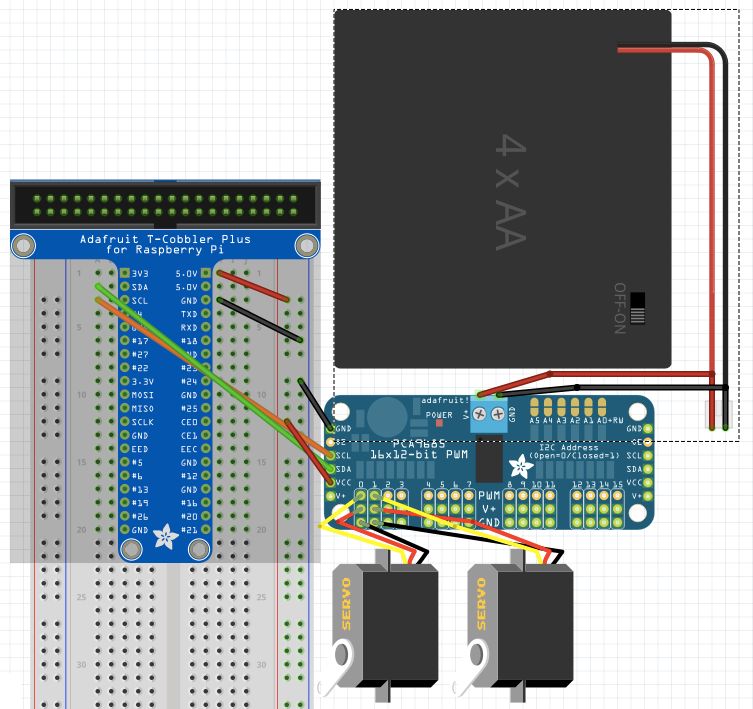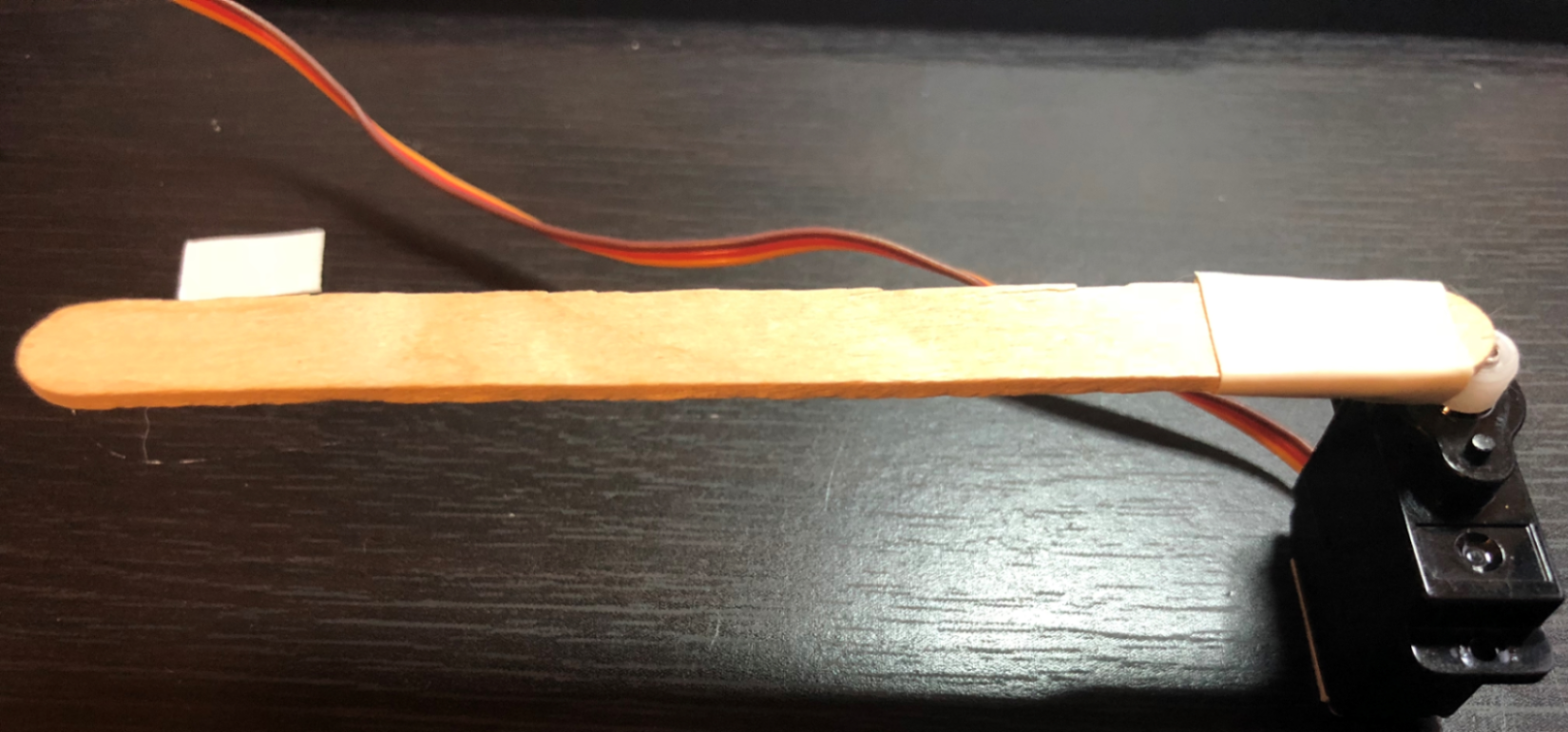Let's build a project where our servo servos as a light meter that sweeps between 0 and 180 degrees based on the reading from the light sensor.
First, we need to wire the light sensor to the board. Remember, I2C devices can share an SDA and SCL pin as long as they have different addresses (which the TSL2591, at 0x29, and the PWM hat, at 0x40, do).

Now that we've wired up the sensor, we'll take on the (optional) task of modifying our servo to look more like a meter.
Take the servo horn and, with the center of the horn facing away from you, move it as far to the left as possible (0 degrees). Do not use a lot of force or you'll strip the gears. Then, use the tape to tape your stick to the servo horn to make it appear longer. then, you can tape it down to a desk or onto a wall, with your meter pointing left. You can see my attempt in the following diagram:

Now that we have our light sensor wired up and...



